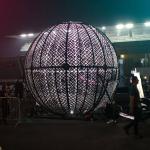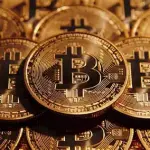In a nation that proudly embraces both its futuristic ambitions and its rich heritage, few art forms embody the soul of the United Arab Emirates quite like Arabic calligraphy. Far more than just a writing system, Arabic script has been elevated over centuries into a profound and mesmerizing art form, revered for its aesthetic beauty, intricate forms, and deep spiritual significance. In the UAE, calligraphy is not merely a historical relic; it is a living, breathing tradition, celebrated in grand public installations, cherished in private collections, and passionately taught to new generations.
To truly appreciate the visual poetry that adorns mosques, public buildings, and works of art across the Emirates is to delve into the "Art of Calligraphy" – understanding its beauty and spiritual depth. It offers a unique window into Islamic culture, where the written word becomes an act of devotion, and every stroke tells a story of faith, wisdom, and artistic mastery.
A Sacred Art Form: The Spiritual Core of Calligraphy
At its heart, Arabic calligraphy's elevated status stems from its sacred connection to Islam. The Quran, the holy book of Islam, is written in Arabic, making the script itself profoundly revered. The act of writing the Quranic verses beautifully became an act of worship, a way to honor the divine word. This spiritual dimension permeated all forms of Arabic calligraphy, transforming it from a functional script into a contemplative art.
- Honoring the Divine Word: Calligraphers were (and still are) often seen as individuals with immense knowledge and piety, meticulously crafting each letter with precision and respect. The beauty of the script was believed to reflect the beauty of the divine message.
- Aniconism in Islamic Art: Given Islam's aversion to figurative representation of living beings, calligraphy became the primary mode of artistic expression. It offered an abstract yet profoundly meaningful way to decorate mosques, palaces, and manuscripts, allowing for artistic creativity without violating religious tenets.
- Meditation and Contemplation: The intricate curves, ligatures, and points of Arabic script invite contemplation. Both the calligrapher in the act of creation and the viewer in the act of reading or observing are drawn into a meditative state, reflecting on the meaning and beauty of the words.
The Evolution of Elegance: Diverse Styles of Arabic Calligraphy
Over centuries, various styles of Arabic calligraphy evolved, each with its unique characteristics, historical context, and applications. In the UAE, you can observe examples of these diverse scripts:
- Kufic:
- Characteristics: One of the oldest scripts, characterized by its angular, bold, and geometric forms.
- Use: Originally used for early Quranic manuscripts, it's often seen in architectural inscriptions due to its monumental quality.
- In UAE: Found in historical sites, ancient mosque engravings, and contemporary art that draws on its geometric simplicity.
- Thuluth:
- Characteristics: Known for its majestic grandeur, with broad, sweeping curves, elongated vertical strokes, and often overlapping letters. It's considered difficult to master.
- Use: Widely used for headings, titles, monumental inscriptions, and ornamentation. It's a favorite for mosque decoration.
- In UAE: Prominently featured in the interiors and exteriors of grand mosques, public monuments, and official documents.
- Naskh:
- Characteristics: A clear, legible, and proportionate script, developed for ease of reading. It's rounder and more compact than Thuluth.
- Use: The most common script for writing books, including the Quran, and everyday texts. It forms the basis of modern Arabic typography.
- In UAE: Ubiquitous in printed materials, street signs, and digital media, reflecting its practical legibility.
- Diwani:
- Characteristics: A highly stylized, flowing, and elegant script with letters often connected and forming complex compositions. It's characterized by its aesthetic beauty rather than immediate legibility.
- Use: Traditionally used for royal decrees, official documents, and decorative purposes.
- In UAE: Often seen in artistic works, certificates, and decorative panels, showcasing its ornamental flair.
- Ruq'ah:
- Characteristics: A simple, quick, and highly legible script, designed for everyday writing. It's more concise and less ornate than Naskh.
- Use: Commonly used for handwriting, journalism, and quick notes.
- In UAE: Often the handwriting style learned in schools and used in informal contexts.
- Nastaliq (Persian origin):
- Characteristics: While not a native Arabic script in the strictest sense, it's widely used for writing Persian, Urdu, and other languages that use the Arabic alphabet. It's elegant, flowing, and appears to "hang" from the baseline.
- Use: Prevalent in poetry, literary works, and artistic pieces in regions with Persian influence.
- In UAE: Found in art galleries, cultural centers, and private collections, reflecting the diverse cultural tapestry of the UAE.
Each style has its own rhythm and character, chosen by the calligrapher to best convey the message and evoke the desired aesthetic and emotional response.
Calligraphy as a Living Tradition in the UAE
In the UAE, the commitment to preserving and promoting Arabic calligraphy is evident in various initiatives and institutions:
- Museums and Cultural Centers:
- Sharjah Calligraphy Museum: This dedicated museum in Sharjah is a jewel for calligraphy enthusiasts. It showcases historical and contemporary works by renowned calligraphers from around the world, illustrating the evolution and beauty of the art form. It's a must-visit for anyone keen to deepen their understanding.
- Louvre Abu Dhabi: While a universal museum, its collection often features stunning examples of Islamic art and calligraphy, highlighting its global significance.
- Qasr Al Hosn (Abu Dhabi): As the oldest stone building in Abu Dhabi, its exhibitions often include historical documents and artifacts showcasing early Arabic script and its development in the region.
- Al Fahidi Historical Neighbourhood (Dubai): Many art galleries and cultural centers within this heritage district feature calligraphic works by local artists, often blending traditional styles with contemporary interpretations.
- Public Art and Architecture: Arabic calligraphy is seamlessly integrated into the urban fabric of the UAE. Grand mosque domes, minarets, and interior walls are adorned with Quranic verses and prayers beautifully rendered in Thuluth or Kufic scripts. Public buildings, monuments, and even modern skyscrapers often feature calligraphic designs as an architectural element, adding cultural depth to the contemporary landscape.
- The Museum of the Future (Dubai): Its exterior is famously inscribed with inspirational quotes by HH Sheikh Mohammed bin Rashid Al Maktoum in exquisite Arabic calligraphy, making the script an integral part of its iconic design.
- Educational Initiatives and Workshops:
- Art and Culture Authorities: Government entities in Dubai, Abu Dhabi, and Sharjah actively support calligraphy education through workshops, classes, and masterclasses for all ages and skill levels. These initiatives aim to nurture new talent and ensure the continuity of the art form.
- Private Studios: Numerous private studios and art centers also offer courses for both beginners and advanced students, fostering a vibrant community of calligraphers.
- Festivals and Exhibitions: The UAE hosts various art festivals and exhibitions that prominently feature Arabic calligraphy, bringing together local and international artists, showcasing new works, and fostering dialogue about the art form's evolution. Sharjah, in particular, is a hub for these events, often hosting international calligraphy biennials.
The Calligrapher's Journey: Beyond the Strokes
For a calligrapher, the process is not merely about writing; it's a disciplined, meditative journey that requires immense patience, precision, and spiritual dedication.
- Tools of the Trade: Traditional tools include the qalam (reed pen), ink (often handmade from soot and natural gums), and paper (specially prepared to absorb ink without bleeding). The preparation of these tools is itself a part of the ritual.
- Discipline and Practice: Mastering calligraphy takes years of rigorous practice, learning specific rules for each letter and style, understanding proportions, and achieving a harmonious flow.
- Composition and Balance: A calligraphic piece is a careful composition, where letters and words are arranged not just for legibility but for aesthetic balance, rhythm, and visual impact. Negative space is as important as the inked strokes.
- Innovation and Interpretation: While deeply rooted in tradition, contemporary calligraphers in the UAE and beyond are also pushing boundaries, blending classical styles with modern aesthetics, digital techniques, and new materials, creating a dynamic and evolving art form.
Experiencing Calligraphy in the UAE
To fully appreciate Arabic calligraphy in the UAE, consider:
- Visiting Dedicated Museums: The Sharjah Calligraphy Museum is a must-visit.
- Exploring Historical Sites: Look for calligraphic inscriptions in old forts and mosques.
- Observing Public Art: Take note of the calligraphic elements in modern architecture and public spaces.
- Attending Workshops: Participate in a beginner's workshop to understand the mechanics and feel the rhythm of the script yourself.
- Visiting Art Galleries: Discover contemporary calligraphic works that combine tradition with modern expressions.
- Engaging with Calligraphers: If possible, speak to a practicing calligrapher about their art and passion.
Conclusion: A Timeless Legacy in a Modern Land
Arabic calligraphy stands as a testament to the UAE's profound respect for its heritage and its commitment to preserving cultural treasures. It is an art form that transcends linguistic barriers, speaking directly to the soul through its captivating beauty and spiritual depth. In a world increasingly dominated by digital screens and fleeting trends, the enduring presence of Arabic calligraphy in the UAE serves as a powerful reminder of the lasting legacy of human artistry, devotion, and the timeless beauty of the written word.
As you explore the Emirates, take a moment to look closely at the inscriptions on a mosque, the designs on a public building, or the intricate lines of a framed artwork. You'll discover not just a script, but a centuries-old conversation, a spiritual journey, and a profound artistic expression that continues to thrive in the heart of the modern Arab world. The art of calligraphy is truly one of the UAE's most beautiful and spiritually resonant treasures.










